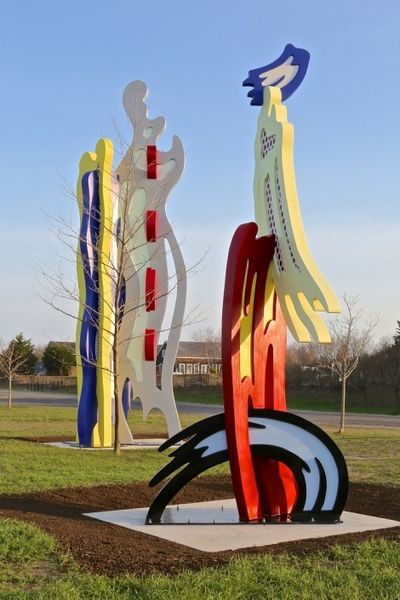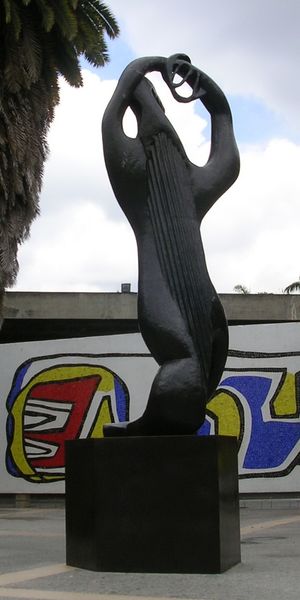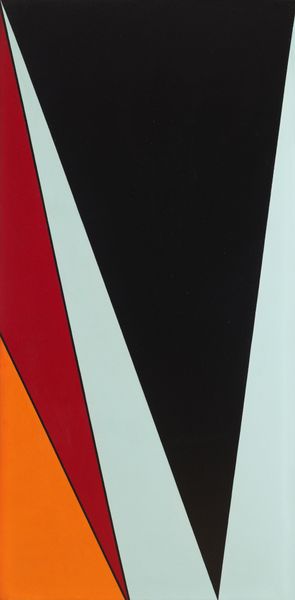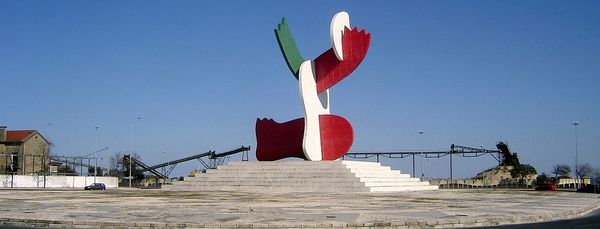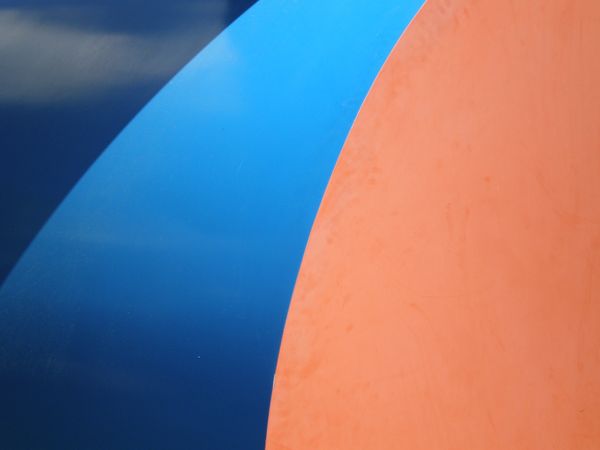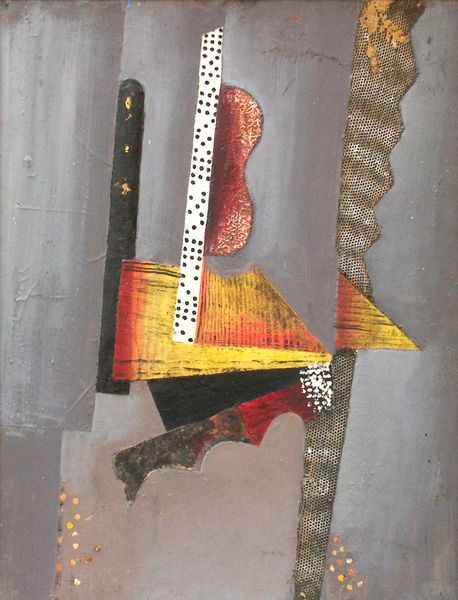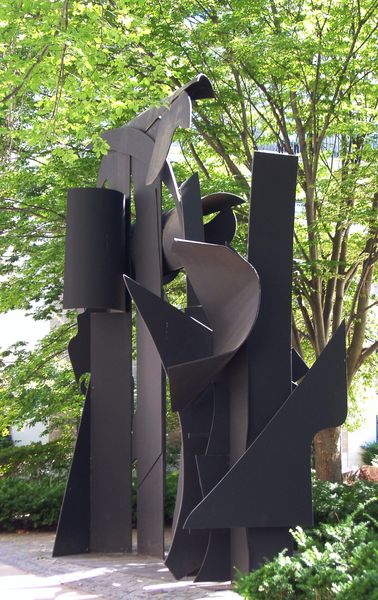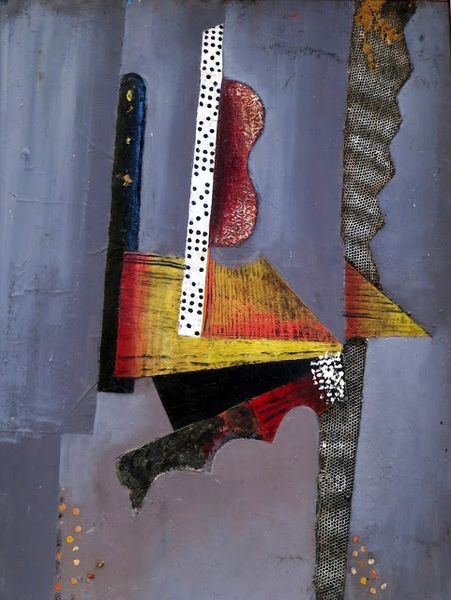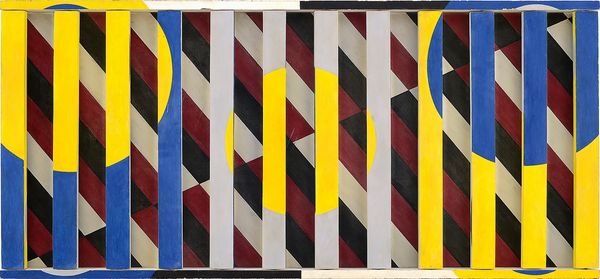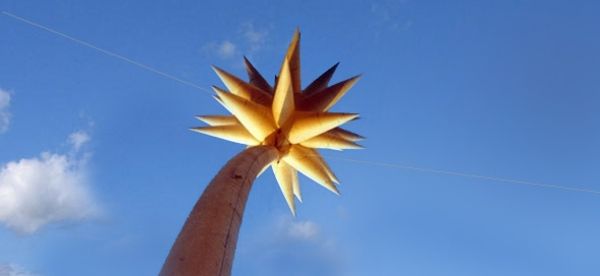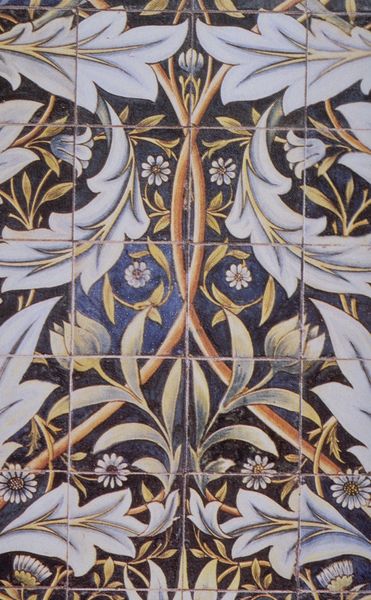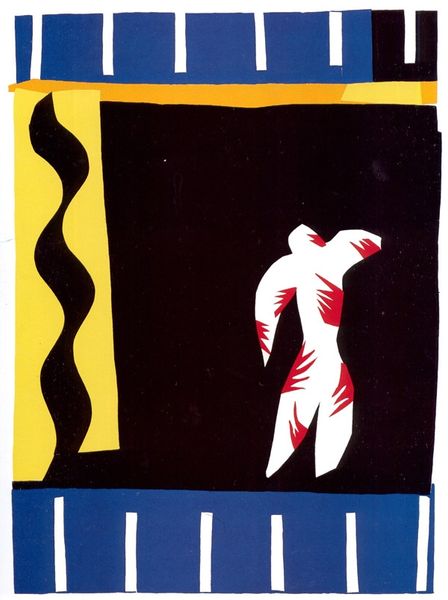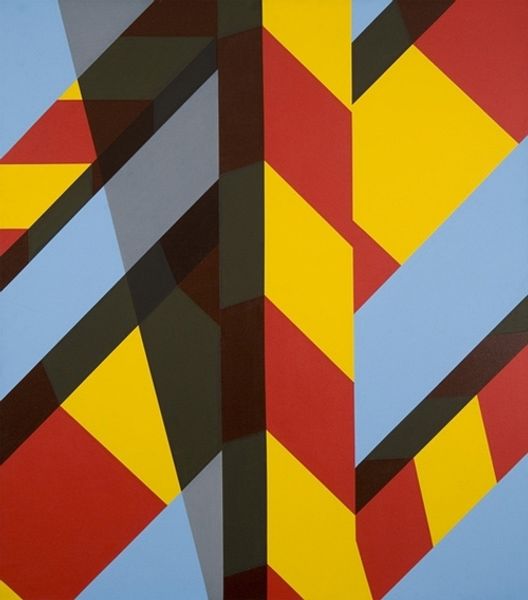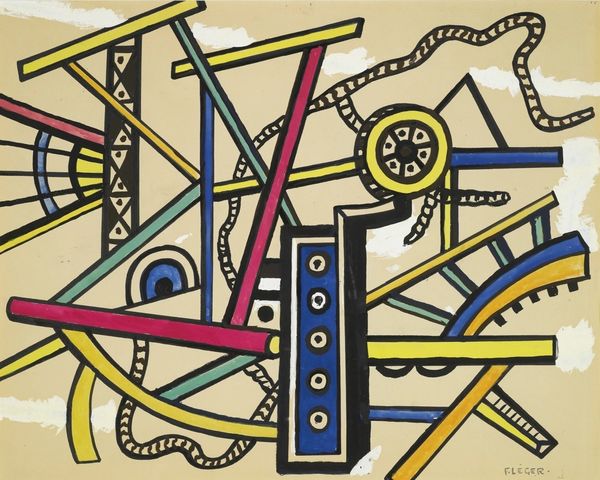
Copyright: Roy Lichtenstein,Fair Use
Curator: So striking, wouldn't you agree? This is Roy Lichtenstein's "The Head," a mixed-media sculpture dating to 1992. Editor: It certainly has an immediate presence. My first impression is how surprisingly monumental it feels, yet the cartoonish lines and flat planes almost negate any sense of traditional sculptural mass. Curator: Exactly. And understanding the historical moment is vital here. Lichtenstein, known for his appropriation of comic book aesthetics, places this “Head” within the narrative of public art, injecting Pop Art directly into the urban landscape, challenging established hierarchies. Think about what "high" art and "low" culture meant in the early '90s. Editor: The deconstruction of form is fascinating. Note how Lichtenstein reduces the head to geometric components, using contrasting colors and his signature Ben-Day dots to define planes and create an illusion of depth and volume on a mostly flat surface. It's a powerful exploration of semiotics. Curator: It also subverts traditional portraiture, doesn't it? By abstracting the human form, Lichtenstein prompts us to question what constitutes identity and representation in a media-saturated world. Whose head is this, and does it even matter? Editor: Precisely. It almost becomes a logo. The lack of personal details, the abstraction… it invites mass consumption and reproduces infinitely. Observe the interplay between the mosaic elements, and how each piece comes together. Curator: Consider its impact in a city center like this one. A piece of public art like "The Head" democratizes access to art. Yet it raises important questions about cultural authority and whose voices are amplified. Is it truly revolutionary if its forms reinforce pre-existing power dynamics, even through Pop Art aesthetics? Editor: Yet, regardless of social meaning, there's visual impact—a sophisticated arrangement of form and color. Curator: Of course. Understanding both artistic intention and socio-cultural significance allows for richer meaning to be gleaned from such art pieces. Editor: I appreciate how your historical perspective informs my observations about form. Curator: Likewise. Thank you.
Comments
No comments
Be the first to comment and join the conversation on the ultimate creative platform.
